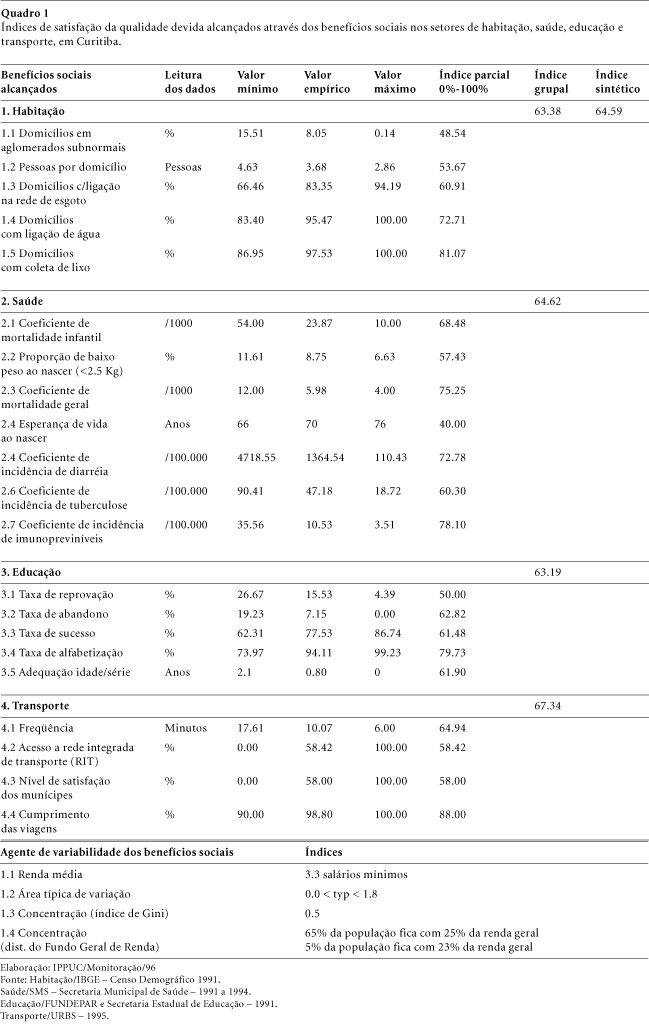What is quality of life and how much of it can be measured? Quality of life is thought of as the result of public policies and the development of a given society, where social-environmental determinants present themselves as attributes of its stakeholders. At the same time, this idea can be understood from the other end of the analyses, from the standpoint of a given population acting out its own reality, what it considers as being quality of life. Starting from the conceptual aspects of the scenarios that express quality of life, concepts about intra-urban differential aspects were adopted as the best way to characterise urban inadequacies and inequalities for a better understanding of the components of the inequities existing in this environment. Initially, the genebrino or distance method was adopted. At present, in the second version of this method, the context has been enriched by other methodologies that provide more consistency to the analysis, thus increase the validity of the measurements. Cluster Analysis and Geographic Information System were also added to this process, both in the intra-urban and multi-centric contexts.
Quality of Life; Intra-urban Differentials; Equity; Indicators







